Exhibition
Harmony Korine
Wormburner
August 3–September 7, 2021
The Bridge, Bridgehampton, New York
I had been waylaid on a houseboat in Siesta Key eating nacho chili cheese dogs. I was listening to the Ferlin Husky song “On the Wings of a Dove.” It was raining, I had a BB gun in my lap, and I was stuck alone with one dusty volume of Encyclopedia Britannica that my parents had ordered from some Mormons in 1982. I opened it up to a picture of Richard Nixon playing golf. I realized that all the presidents play golf for some reason. It felt like a moment of pure revelation. The presidents will never stop golfing. Fore!
—Harmony Korine
This exhibition features new paintings by Harmony Korine depicting American presidents in the act of playing golf, a strangely quintessential presidential activity. Each painting is sourced from an archival photograph, which Korine repaints, either in black and white or full color, thereby transforming the original expressions and gestures into almost exaggerated versions of themselves. He then adds ribbons of color that dance across each composition with childlike irreverence, enhancing the paintings’ tragicomic impression while adding a tinge of absurdity.
Share

Harmony Korine, 37, 2019–21 © Harmony Korine
Related News
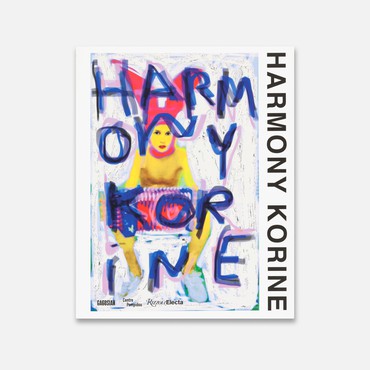
Online Reading
Harmony Korine
Harmony Korine is available for online reading from March 16 through April 15 as part of Artist Spotlight: Harmony Korine. Published by Rizzoli in association with Gagosian and Centre Pompidou, Paris, this is the first comprehensive monograph on the cinema, art, writing, and creative world of Korine, the boundary-breaking auteur of Kids (1995), Gummo (1997), Mister Lonely (2007), and Spring Breakers (2012). An interview by film critic Emmanuel Burdeau and an extensive multipart essay by curator Alicia Knock trace common themes through Korine’s films and artworks, considering the ways in which he has captured the surreal quality of contemporary life.
Harmony Korine (New York: Rizzoli International Publications; Paris: Gagosian and Centre Pompidou, 2018)
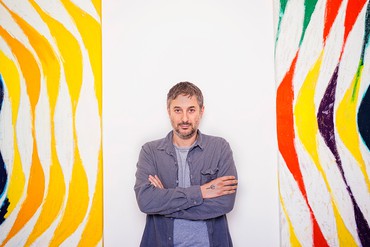
Artist Spotlight
Harmony Korine
March 16–22, 2022
Applying the term “mistakism” to his combination of wayward aesthetics and non sequitur wit, Miami-based artist and filmmaker Harmony Korine fuses backwoods surrealism with narcotic abstraction to conjure a perverse, disorienting vision. His paintings and mixed-media works incorporate materials such as leftover household emulsion and old videotapes in designs that reflect on memory and emotion. Ranging from swirling psychedelic grids to hand-painted figuration, Korine’s artworks mirror the deliberate confusion of staging and improvisation that characterizes his films, presenting images united by their hypnotic restlessness.
Photo: Sarah Lee/eyevine/Redux
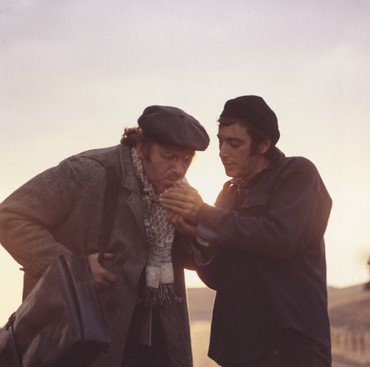
Screening and Talk
Harmony Korine
Jerry Schatzberg
Sunday, November 3, 2019, 7:15–9:45pm
Metrograph, New York
www.metrograph.com
The gallery will present Jerry Schatzberg’s 1973 feature film Scarecrow, starring Gene Hackman and Al Pacino, at Metrograph, New York. Following the screening, Schatzberg and Harmony Korine will discuss the film, their influences, and the role of humor in their varied practices, in a conversation moderated by Carlos Valladares. Valladares recently wrote on Schatzberg’s prolific career in the Winter 2019 issue of the Gagosian Quarterly and Korine is curating an exhibition of works by H. R. Giger and Mark Prent opening at Gagosian, Park & 75, New York, on November 5. The event has reached capacity.
Jerry Schatzberg, Scarecrow, 1973 (still). Photo: courtesy Jerry Schatzberg Archive

Francesca Woodman
Ahead of the first exhibition of Francesca Woodman’s photographs at Gagosian, director Putri Tan speaks with historian and curator Corey Keller about new insights into the artist’s work. The two unravel themes of the body, space, architecture, and ambiguity.
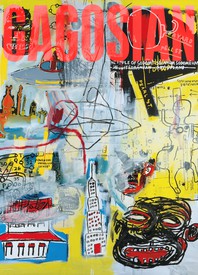
Now available
Gagosian Quarterly Spring 2024
The Spring 2024 issue of Gagosian Quarterly is now available with a fresh cover design featuring Jean-Michel Basquiat’s Lead Plate with Hole (1984).
Simon Hantaï: Azzurro
Join curator Anne Baldassari as she discusses the exhibition Simon Hantaï:Azzurro, Gagosian, Rome, and the significance of blue in the artist’s practice. The show forms part of a triptych with Gagosian’s two previous Hantaï exhibitions, LES NOIRS DU BLANC, LES BLANCS DU NOIR at Le Bourget in 2019–20, and Les blancs de la couleur, la couleur du blanc in New York, in 2022.

Sofia Coppola: Archive
MACK recently published Sofia Coppola: Archive 1999–2023, the first publication to chronicle Coppola’s entire body of work in cinema. Comprised of the filmmaker’s personal photographs, developmental materials, drafted and annotated scripts, collages, and unseen behind-the-scenes photography from all of her films, the monograph offers readers an intimate look into the process behind these films.
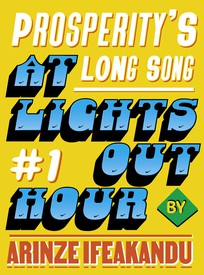
Prosperity’s Long Song #1: At Lights-Out Hour
We present the first installment of a four-part short story by Arinze Ifeakandu. Set at the Marian Boys’ Boarding School in Nigeria, “Prosperity’s Long Song” explores the country’s political upheavals through the lens of ancient mythologies and the mystical power of poetry.

Mount Fuji in Satyajit Ray’s Woodblock Art, Part II
In the first installment of this two-part feature, published in our Winter 2023 edition, novelist and critic Amit Chaudhuri traced the global impacts of woodblock printing. Here, in the second installment, he focuses on the films of Satyajit Ray, demonstrating the enduring influence of the woodblock print on the formal composition of these works.

Adaptability
Adam Dalva looks at recent films born from short stories by the Japanese writer Haruki Murakami and asks, What makes a great adaptation? He considers how the beloved surrealist’s prose particularly lends itself to cinematic interpretation.

Vladimir Kagan’s First Collection: An Interview with Chris Eitel
Chris Eitel, Vladimir Kagan’s protégé and the current director of design and production at Vladimir Kagan Design Group, invited the Quarterly’s Wyatt Allgeier to the brand’s studio in New Jersey, where the two discussed the forthcoming release of the First Collection. The series, now available through holly hunt, reintroduces the first chair and table that Kagan ever designed—part of Eitel’s efforts to honor the furniture avant-gardist’s legacy while carrying the company into the future.

Game Changer: Alexey Brodovitch
Gerry Badger reflects on the persistent influence of the graphic designer and photographer Alexey Brodovitch, the subject of an upcoming exhibition at the Barnes Foundation, Philadelphia.

Outsider Artist
David Frankel considers the life and work of Jeff Perrone, an artist who rejected every standard of success, and reflects on what defines an existence devoted to art.

Goetheanum: Rudolf Steiner and Contemporary Art
Author and artist Ross Simonini reports on a recent trip to the world center of the anthroposophical movement, the Goetheanum in Switzerland, exploring the influence of the movement’s founder and building’s designer Rudolf Steiner on twentieth-century artists.

Duane Hanson: To Shock Ourselves
On the occasion of an exhibition at Fondation Beyeler, novelist Rachel Cusk considers the ethical and aesthetic arrangements that Duane Hanson’s sculpture initiates within the viewer.
